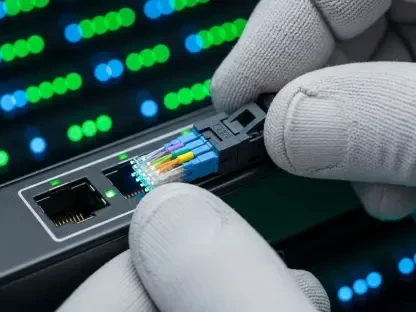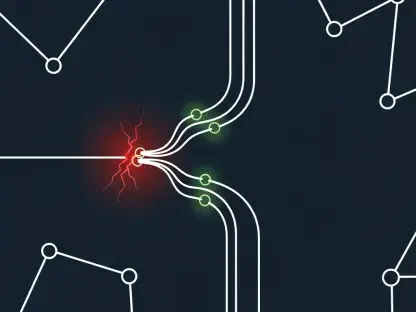Quantum networking represents a frontier in technological advancement, poised to revolutionize how data is transmitted and secured across the globe. Unlike classical systems that rely on traditional bits of information, quantum networking uses quantum bits, or qubits, promising unprecedented levels of speed and security. However, despite substantial progress, the field has yet to achieve the breakthrough scalability and functional integration needed for quantum networks to communicate seamlessly like their classical counterparts. This gap highlights the urgency for further development, particularly in scaling technologies and reducing operational error rates. EPB, located in Chattanooga, Tennessee, stands at the forefront of quantum networking in the United States, having already launched the nation’s first commercial quantum network. Yet, transitioning to a fully integrated quantum network, comparable to classical systems, still presents significant challenges. As the demand for more secure communication solutions increases, influenced by potential threats to current encryption technologies, quantum networking continues to be an essential area of research and interest.
Scaling Challenges and Technological Hurdles
Scaling the network remains one of the primary challenges that quantum networking faces today. Unlike classical networking systems, quantum networks require complex setups to manage entangled qubits across distances, demanding substantial breakthroughs in technology to ensure scalability and reliability. Moreover, error rates in quantum systems need to be addressed to promote mainstream adoption. The inherent fragility of quantum states poses a technical barrier; small environmental interferences can lead to significant data transmission errors. Meanwhile, commercial applications remain limited, with current systems unable to demonstrate widespread practical use cases. The hope is that exploring partnerships with technology leaders, such as EPB’s collaboration with IonQ, will accelerate the development of scalable models and solutions. As networks grow, maintaining consistent performance alongside error correction will be pivotal in realizing the full potential of quantum communications.
Additionally, a key area of concern is developing efficient methodologies for error correction. Quantum error correction differs significantly from classical methods, requiring novel approaches to manage and rectify errors without collapsing the quantum state. Research continues to explore innovative solutions, including redundant qubit systems and advanced algorithms capable of predicting error patterns before they lead to data loss. The goal is to create a robust framework capable of maintaining data integrity while harnessing quantum speeds. Successfully overcoming these hurdles could position quantum networking as an essential component of global communication infrastructure, capable of handling complex datasets with precision and efficiency. The challenges, although daunting, are not insurmountable with continued advancements and research in quantum computing and communications technologies.
Security Implications and Future Projections
Cybersecurity remains a driving force behind the immense interest in quantum networking. With the potential of quantum computing to undermine current encryption standards, known as “Q-Day,” there is significant motivation to develop quantum-secure communication solutions. Quantum networks can harness the principles of quantum mechanics to detect unauthorized transmissions, providing a new dimension of security unattainable through classical methods. McKinsey forecasts indicate substantial growth in the quantum communications market, in part driven by this enhanced need for secure, tamper-proof communication channels. Quantum technologies promise to revolutionize data protection, creating virtually unbreachable systems that appeal to industries where privacy and confidentiality are paramount. However, developing universally compatible quantum-secure infrastructures remains a complex task, requiring collaboration at a global scale.
Globally, countries like China and South Korea are progressing in quantum infrastructure, contributing to the development of a quantum-secure landscape. Despite these international advancements, a unified system is still elusive, underscored by diverse technological standards and methodologies. The call for standardized protocols is increasing, intending to integrate disparate national systems into a cohesive global network. With cybersecurity threats evolving, quantum networking presents a promising avenue for securing future communications. As industries continue to grapple with these challenges, the role of quantum technologies in safeguarding sensitive information becomes increasingly critical. Successful integration of quantum networking could redefine the approach to digital security, offering innovative techniques that balance speed and safety. The journey ahead involves overcoming significant technical barriers and coordinating global efforts towards a new era of quantum-enhanced communication.
Navigating the Path to Quantum Integration
Quantum networking represents a cutting-edge leap forward, poised to transform global data transmission and security. While classical systems use traditional bits, quantum networking employs quantum bits, or qubits, offering unparalleled speed and security levels. Yet, despite notable strides, the field hasn’t reached the necessary scalability and seamless integration needed for quantum networks to communicate as efficiently as classical networks. This gap underscores the urgent need for advancements in scaling technologies and reducing error rates. Located in Chattanooga, Tennessee, EPB leads the charge in quantum networking in the U.S., launching the first commercial quantum network in the nation. However, transitioning to a fully integrated quantum network, matching the functionality of classical systems, remains daunting. With rising demand for secure communication amid threats to existing encryption technologies, quantum networking remains a crucial research area, offering promising solutions to future cybersecurity challenges.









